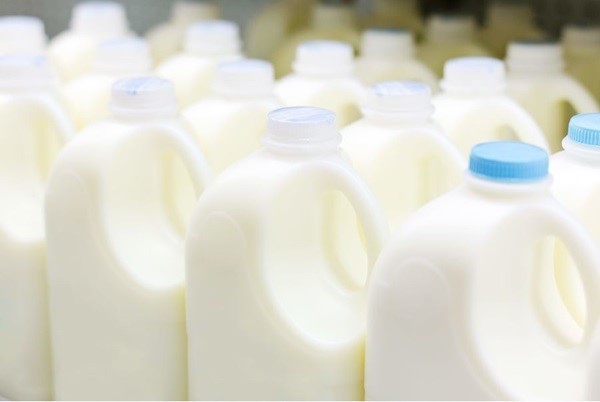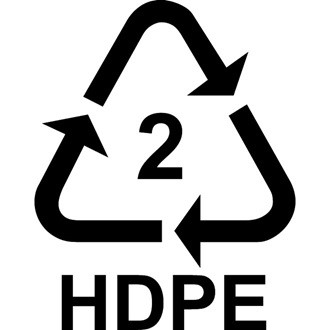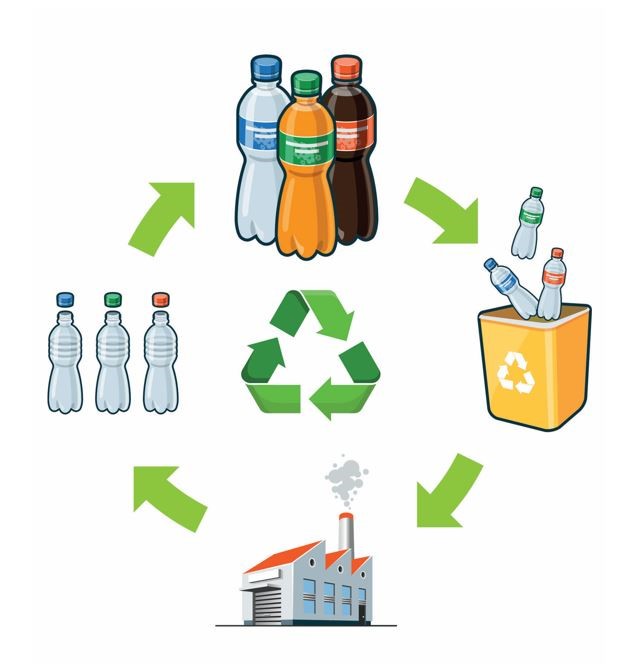There are many different types of milk – full fat, semi-skimmed, organic, oat, nut, chocolate – but most of the milk that UK consumers have on their cereal and in their coffee comes from a plastic milk bottle found in the refrigeration aisle of any supermarket or corner shop.
When you purchase a bottle of milk, do you ever think what happens to the bottle once it’s empty or what happened to it before it arrived in the supermarket’s fridge? You might be surprised to learn those two questions have the same answer. That’s because milk bottles can be recycled in a closed loop, meaning the bottle you put into your recycling bin can become part of a new milk bottle!
Making milk bottles
Plastic milk bottles are made from high density polyethylene (HDPE), and are easily identified by the number “2” in the recycling triangle on the bottom of the bottle.
Why is HDPE used instead of other materials?
HDPE is strong and lightweight, reducing necessary weight to heavy volumes of liquid. Carrying six pints of milk in a glass jug would be quite heavy and would smash if dropped. Although plastic milk bottles would break if dropped from a height, it wouldn’t shatter.
HPDE is a food-grade plastic, so it’s safe for storing perishable goods for a short amount of time. It can also be shaped to make a handle, making for easy manoeuvring from the fridge to the counter, especially useful for the elderly or those with disabilities.
How is the plastic turned into milk bottles?
Recycled pellets (rHDPE) are first blended with virgin material which is then directly blow moulded into the shape of the milk bottle – like blowing up a balloon with warm air! The walls of the mould are cold, so when the plastic hits the walls, it cools and sets.
Filling the milk bottles
Did you know? A cow can produce up to 30 litres of milk a day, that’s sixty 1-pint milk bottles.
Up until this point, nearly all milk bottles look the same because they are all natural in colour – no matter who makes them or who fills them with milk. White milk bottles, unlike natural coloured bottles, can’t be recycled into new milk bottles because of the colouring, but they can still be recycled into other valuable products. It’s not until the labels are added to the bottles at the dairies that they recognisable as different brands. The labels are designed to fall off easily in the recycling process.
Purchasing a bottle of milk
Did you know? Retail expenditure in Great Britain is highest for skimmed milk compared to other milk types.
The part of the milk bottle’s journey people are most familiar with is the purchasing of a bottle of milk, so we won’t explain how this process works!
Disposing of milk bottles
Once all the milk has been consumed, the bottle’s journey with the consumer has ended, and it’s time to move onto the next stage – disposal.
Cleaning out milk bottles is important element of recycling, not only will it reduce odours in your bin, (sour milk doesn’t smell sweet!) but it will remove potential contamination of dry materials in your recycling such as paper and card.
Should you remove lids and labels too?
No need to remove the labels and lids from milk bottles, labels are specifically designed to be easily removed during the recycling process, and the caps will be recycled into other new products.
Recycling milk bottles
The final step in the life of a milk bottle is the recycling process. It starts when waste service vehicles like the Biffa’s Wasteater’s collect recycling, either from household kerbside or from businesses and transport the waste to a transfer station, a central location for all waste vehicles to drop off their collections.
From there, materials are weighed and sent to processing facilities – milk bottles along with other recyclables will be sent to a materials recycling facility (MRF). Materials go through mechanical and manual sorting to remove any non-recyclable materials that have accidentally made their way to the MRF before being separated by material type.
Milk bottles are then flattened and baled to be transported to Biffa Polymers, which accepts around 24,000 tonnes every year! At Biffa Polymers, bottles are industrially cleaned, shredded and turned into plastic pellets.
Click to discover how the award-winning facility recycles plastic.
Approximately 18,000 tonnes of food grade material is produced at Biffa Polymers annually. These pellets are then sold to milk bottle manufacturers who will use the recycled plastic pellets along with virgin plastic to create a new milk bottle and so the whole process starts again!
Did you know? In the UK, milk bottles are now up to 40% recycled content, and although you couldn’t tell all major diaries in Great Britain use recycled content in their bottles.






Subscribe for free